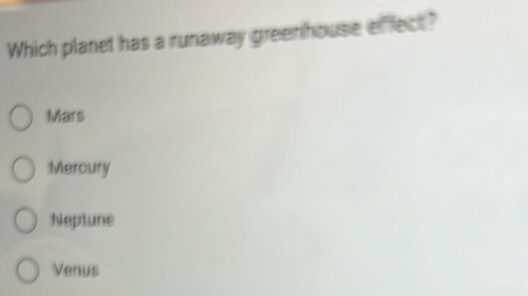As the consequences of climate change become increasingly palpable, the urgency to mitigate global warming grows ever more pressing. This existential quandary beckons one playful question: What if we could turn back the clock on our environmental transgressions? Just imagine—a world where lush greenery flourishes, skies are a brilliant blue, and communities thrive in harmonious coexistence with nature. However, such an idyllic vision may not manifest through mere whimsy. It demands strategic action, innovative solutions, and our collective resolve to forge a greener future.
In order to confront the challenges posed by climate change, it is essential to explore multifaceted approaches that cater to diverse sectors and incorporate both individual and systemic transformations.
Harnessing Renewable Energy: The Solar and Wind Revolution
The transition from fossil fuels to renewable energy sources is pivotal in the struggle against global warming. Solar and wind energy are at the forefront of this revolution, both abundant and increasingly cost-effective. By harnessing the sun’s rays and the winds that sweep across our landscapes, we can diminish our carbon footprint and reduce dependence on polluting energy sources.
Imagine sprawling solar farms capturing sunlight in arid deserts and towering wind turbines gracefully spinning on breezy hilltops. This is no utopian fantasy; it’s a tangible reality that has already begun to reshape the energy landscape in numerous countries. Incentivizing the development of solar panels for residential use, improving grid infrastructure, and investing in offshore wind farms can accelerate this transition. Furthermore, governments must implement policies that support renewable energy research and development, ensuring that innovation keeps pace with the increasing demand for sustainable solutions.
Reimagining Transportation: The Shift to Green Mobility
Another significant contributor to global warming is the transportation sector, which is responsible for a sizeable portion of greenhouse gas emissions. Reimagining our modes of transport is imperative to curtail these emissions. Electric vehicles (EVs), public transit systems, and even non-motorized options like cycling and walking should be prioritized.
The emergence of electric vehicles represents a turning point in our transportation paradigm. With advancements in battery technology and expanding charging infrastructure, it is becoming more feasible to transition away from gasoline-powered engines. Additionally, the adoption of public transportation could alleviate congestion while minimizing environmental impact. Extended bus and rail networks can encourage communities to rely less on personal vehicles, thus reducing carbon outputs.
Moreover, urban planning should emphasize walkable communities and cycling routes. Such initiatives not only reduce carbon emissions but also promote healthier lifestyles. Could this be the spark we need to cultivate a culture that values sustainability over convenience?
Cultivating Sustainable Agriculture: Nourishing the Planet
Agriculture is a double-edged sword in the context of climate change. While it is essential for survival, traditional farming practices contribute significantly to greenhouse gas emissions. However, by adopting sustainable agricultural techniques, we can foster a resilient food system that nourishes the planet.
Practices such as regenerative agriculture focus on soil health, carbon sequestration, and biodiversity. Techniques like crop rotation, agroforestry, and reduced tillage can mitigate emissions while enhancing yield. By nurturing the earth rather than depleting it, farmers become stewards of the environment rather than contributors to its degradation.
Furthermore, fostering awareness about the benefits of local food systems can reduce transportation emissions associated with food distribution. Supporting local farmers markets and community gardens not only strengthens local economies but also encourages consumers to embrace environmentally friendly food choices. Through collective effort, we can transform our agricultural landscape into one that is both productive and sustainable.
Legislative Action: The Catalyst for Change
Individual actions, while significant, may not suffice on their own. Robust legislative frameworks are necessary to facilitate systemic changes that address global warming comprehensively. Strengthening environmental regulations and enforcing stricter emissions standards can compel industries to adopt greener practices.
Additionally, government incentives for businesses that prioritize sustainability can catalyze innovation. Tax credits for renewable energy investments, grants for energy efficiency improvements, and subsidies for public transportation projects can shift the economic paradigm toward sustainability. Moreover, international cooperation is crucial; global alliances are needed to tackle a problem that transcends borders. Participating in and committing to global treaties, such as the Paris Agreement, can forge a unified path toward reducing global temperatures.
Empowering Communities: The Power of Collective Action
Ultimately, the fight against global warming transcends individuals and institutions—it requires collective effort at the community level. Grassroots movements can amplify voices advocating for sustainable practices, while community-led initiatives can enact change at a local scale. Could local partnerships with businesses, governments, and non-profits be the linchpin for profound environmental impact?
Educating communities about sustainable living, organizing neighborhood clean-up events, and promoting ecologically focused advocacy can drive local engagement. When communities rally around a shared vision for sustainability, the repercussions can ripple outward, influencing broader societal change.
As reflections on climate change continue to permeate our discourse, the time is ripe for decisive action. While the challenge may seem daunting, envisioning a greener future is the first step toward realization. Armed with innovative strategies, community engagement, and collective resolve, we hold the power to combat global warming and usher in an era of sustainability. Together, we can nurture a thriving planet for generations to come, ensuring that the beauty of our world remains untainted by the scars of climate change.







